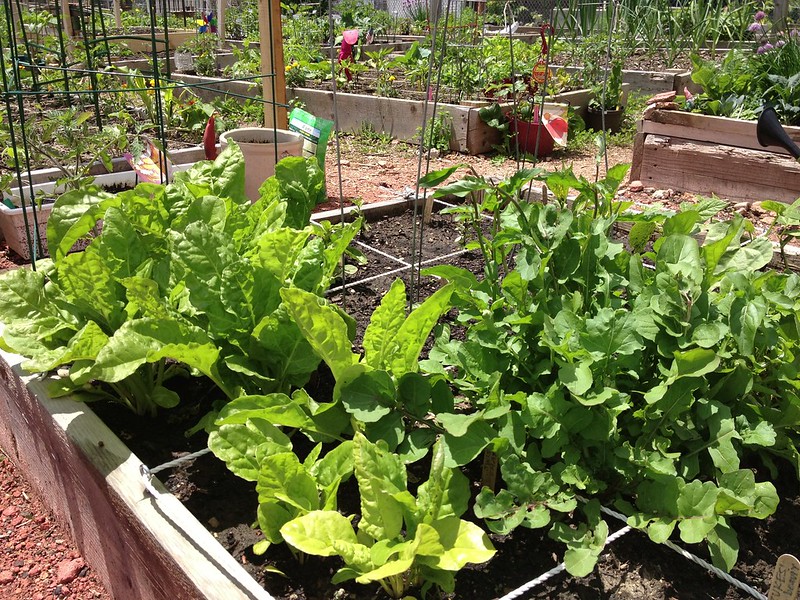Photo credit: Kaitlin Byrd on Flickr
It doesn’t matter if you’re new to vegetable gardening or if you’re well-seasoned. One of the biggest questions you ponder is what to plant in your garden every year.
The truth is, there’s a little art to choosing plants and a whole lot of science. Here are things to consider (the science part) when selecting plants for your homestead garden and some of the best plants to grow.
Choosing Vegetable Varieties For Your Garden
Compare The Vegetable’s Days to Maturity and Your Growing Season Length
If you’re unfamiliar with it, days to maturity is how long it takes for the plant to be harvestable from the planting date. Your growing season is the number of days between the last frost in the spring and the first fall frost.
Ideally, you want vegetables that align with your growing season’s length. You want the days to maturity shorter than the growing season so the plant has harvestable produce before it gets too cold.
If the days to maturity is longer than your growing season, you’ll need to:
- Start seeds indoors ahead of the spring frost-free date and transplant them outside when the weather is suitable.
- Extend the growing season in the fall by covering plants with floating row covers, cold frames, or cloches.
Mix Family Favorites & New Veggies
Planning your garden is a great time to add new plants you’ve never grown before. But be careful doing this. While planting new things to try is fun, you don’t want to load your garden with veggies your family won’t eat. When your goal is to provide food for your family, you want to utilize your garden as efficiently as possible.
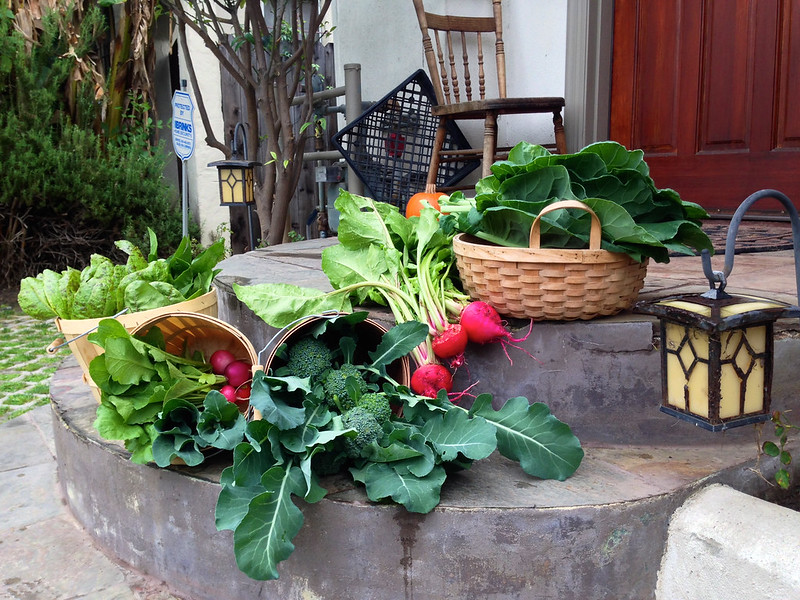
Photo credit: farmscape on Flickr
Sit down and write a list of the vegetables you eat raw and the ones you cook with the most. Focus most of the garden space on vegetables you know your family eats (and loves).
Then plant one or two new veggies to feel how well they go over at the dinner table.
Understand The Difference Between Cool And Warm-Weather Plants
Unbeknownst to some people, vegetable plants may prefer the cooler temperatures of spring and fall, or they may love the heat of summer. Knowing if a plant is cool-season or warm-season is key to getting a good harvest.
- Cool-season crops thrive in lower temperatures of spring and fall. Some plants need the cold to germinate, set fruit, or mature. They do not like high temps. Because of this, you must plant them early enough in the spring to mature before the summer heat arrives or they need to go in the ground later, so they are maturing as temps drop in the fall. For instance, some kale and brussels sprouts benefit from a light autumn frost.
- Warm-season vegetables need the high heat of summer to grow and mature. They aren’t cold-tolerant and can’t be planted outdoors until the chance of spring frost has passed. Warm-season crops also need to be ready for harvesting before nighttime temperatures drop late in the season. Some vegetables will decrease in quality or change in taste when exposed to the cold. Cucumbers, for instance, become bitter when it starts getting too cold at night.
Best Vegetables To Grow In Your Homestead Garden
Now, let’s talk about specific vegetables to plant in your garden, and recommended varieties.
Leafy Greens
Growing leafy greens is a great way to start your gardening adventure or add to your current gardening plan. They may not give a colossal harvest per seed—compared to summer squash or tomatoes—but they grow quickly, need very little maintenance, and are happy even in containers.
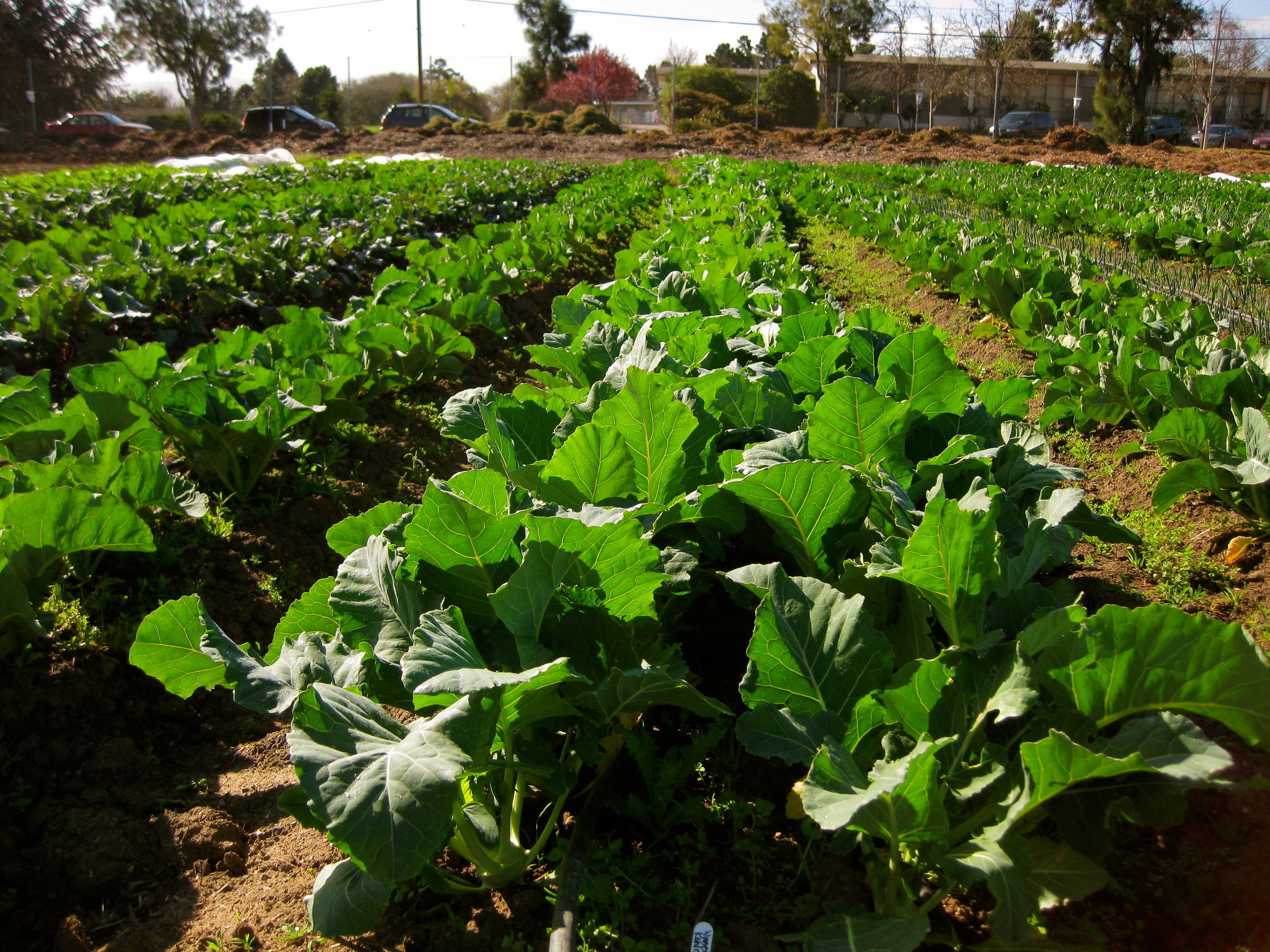
Photo credit: 00Maloney on Flickr
Greens are a cool-season crop, so if you live in a hot climate you will need to time your plantings to avoid warmer months. When it’s too hot, plants “bolt” and their flavor declines. To avoid this look for bolt-resistant varieties or grow greens where they get shaded by taller neighboring plants.
Recommended Varieties
- Chard: Bright Lights, Deer Creek Seed Swiss Chard, Fordhook Giant
- Collards: Champion, Deer Creek Seed Collards, Georgia, Tiger Hybrid
- Leaf Lettuce: Black Seeded Simpson, Grand Rapids, Red Sails
- Kale: Blue Curled Scotch, Common Curly Kale, Deer Creek Seed Kale, Red Russian Kale
- Spinach: Bloomsdale Longstanding, Deer Creek Seed Spinach, Double Take
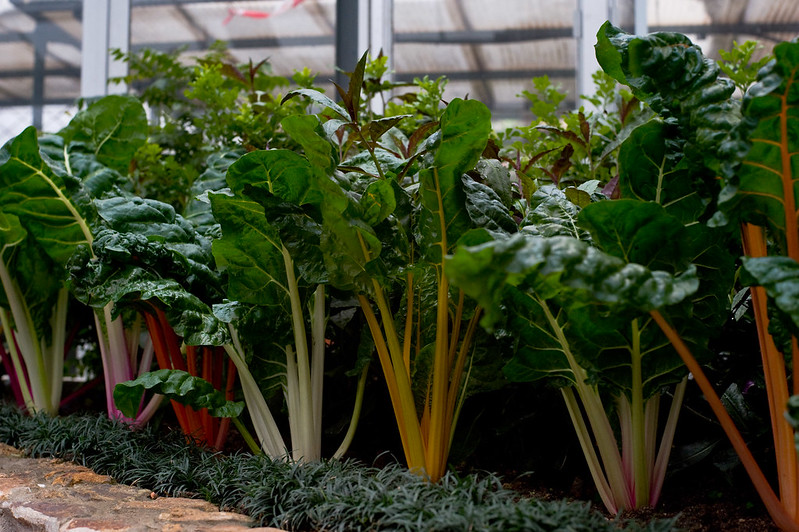
Photo credit: Aidan Mak on Flickr
Tomatoes
Tomatoes are one of the best plants for getting the most bang for your buck. They are relatively easy to grow, and a single plant can yield 8-10 pounds of fruit in a single season. Growing one or two plants easily meets the needs of a small family.
Plus, excess fruit is easy to put up for the winter in many different ways. You can make salsa, spaghetti sauce, tomato paste, tomato juice, etc.
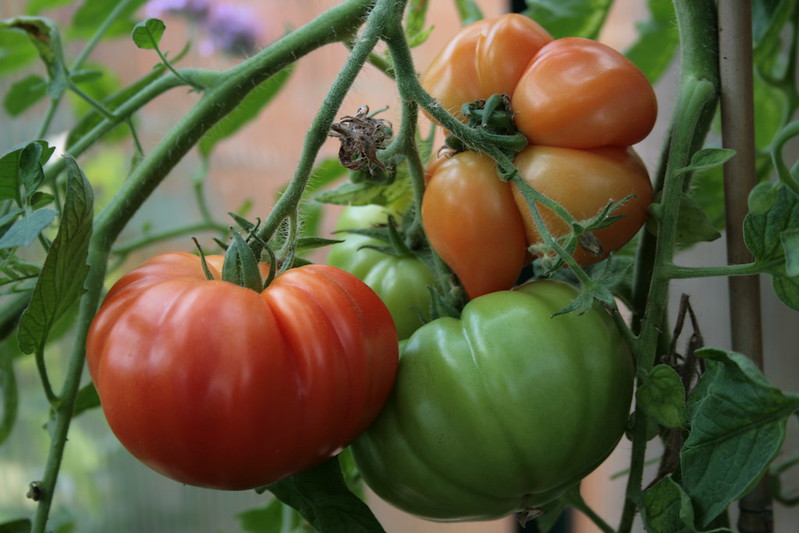 Photo credit: Andy on Flickr
Photo credit: Andy on Flickr
When buying tomatoes, it’s vital to understand the difference between determinate and indeterminate types.
- Determinate tomatoes flower all at once, and all fruits ripen within about a two week window. Once they mature, they’re done for the season. These plants are great if you’re looking to can tomatoes for the winter.
- Indeterminate tomatoes produce ripe fruits throughout the season. They don’t have a large flush of ripe fruit like determinate types but instead have a few ready every day or every couple of days. They are great for eating fresh.
Recommended Varieties
- Cherry Tomatoes: Baby Boomer, Sunsugar, Supersweet 100
- Slicing Tomatoes: Big Beef, Brandywine, Chef’s Choice Green, Early Girl
- Plum or Paste Tomatoes: Amish Paste, San Marzano
Peppers
While smaller in size than tomato plants, peppers are another garden favorite because of their plentiful bounty. These plants have relative low-maintenance needs and few pest issues, so they’re easy to tuck into a corner of the garden. Choose from either sweet or hot peppers (or a mix of both) based on your family’s tastes.
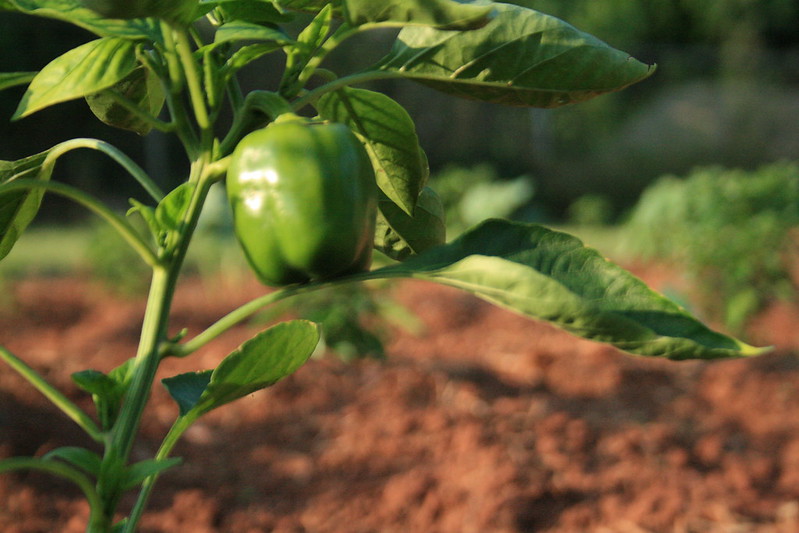
Photo credit: Ken Cook on Flickr
Recommended Varieties
- Sweet Peppers: Big Red, California Wonder, Sweet Banana, Sweet Sunrise
- Chili Peppers: Anaheim, Hungarian Yellow Wax, Jalapeno, Serrano Chili
Root Vegetables
Root vegetables are what their name states—the fleshy part we eat is an enlarged root that grows underground. They are a great addition to your garden! Not only are they healthy for you and store well through the winter in a cellar, but these cool-season veggies go in the ground early and can withstand cooler fall temps.
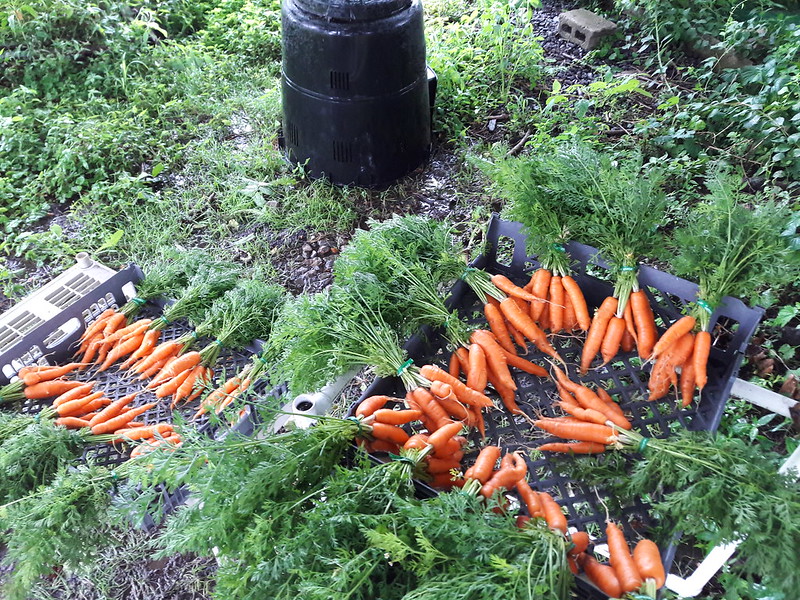
Photo credit: Belmont Acres Farm on Flick
Recommended Varieties
- Beets: Detroit Dark Red, Golden, Ruby Queen Beet,
- Carrots: Scarlet Nantes, Imperator 58 Carrot, Little Fingers
- Potatoes: Kennebec, Red Pontiac, Rio Grande Russet, Yukon Gold
- Rutabaga: American Purple Top Rutabaga, Champion Purple Top, Laurentian Rutabaga
- Turnips: Green Globe, Purple Top, Seven Top, Shogoin, York Globe
Cucurbits
People are often hesitant to plant vining crops like pumpkins and squash because they take up a good deal of space. But, they are very productive plants. Plus there are ways to grow them and use space efficiently.
To maximize your use of space, you can grow them around the base of taller crops like sweet corn and sunflowers or train them up vertical supports or arches. When grown vertically, they shade the soil, helping keep soil temps lower, improving moisture retention, and preventing weed seed germination.
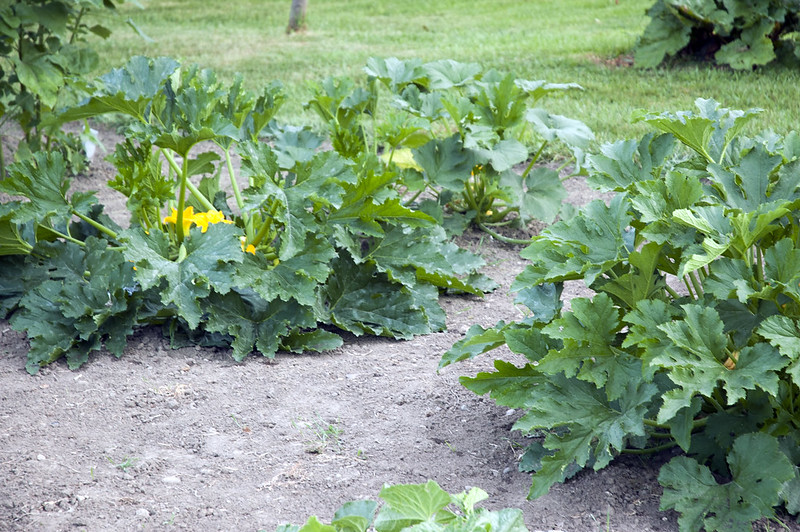
Photo credit: Wisconsin Dept. of Agriculture on Flickr
Recommended Varieties
- Cucumbers: Boston Pickling, Straight 8 Cucumber, Summer Dance
- Pumpkins: Cinderella, Connecticut Field, Deer Creek Seed Pumpkin Plot, Early Sweet Sugar Pie
- Summer Squash: Black Magic Zucchini, Cocozelle, Early Summer Yellow Crookneck
Brassicas (Cole Crops)
Also known as cruciferous vegetables, this entire family of brassica plants are descendants of wild cabbage. Cole crops are great garden vegetables (if your family eats them) because they are some of the hardiest, cool weather crops. Like root veggies, they can go in the ground earlier or you can plant them later for a fall harvest.
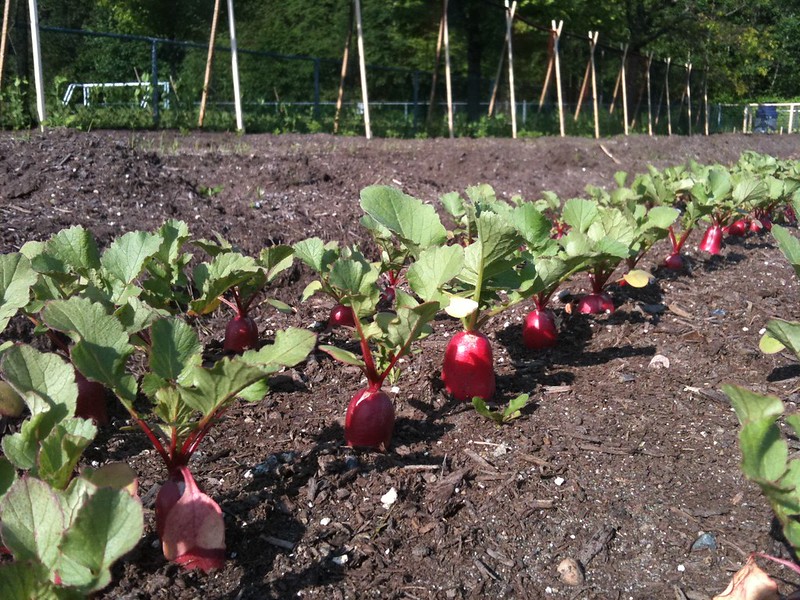
Photo credit: The Edible Garden Projects on Flickr
Recommended Varieties
- Broccoli: Calabrese, Destiny, Sun King
- Cabbage: Brunswick, Mammoth Red Rock, Savoy
- Cauliflower: Self-Blanching Snowball, Snowball Y Improved, Grafitti Hybrid
- Daikon: China Rose, Daikon Oil Seed Radish, Red King
- Kohlrabi: Kohlrabi
- Radish: Cherry Belle, Early Scarlet Globe, Rudolph
Peas
Peas serve double-duty, making them a great addition to your garden. They add nitrogen to the soil and put food on the table. Grow them climbing a trellis or cane poles to maximize vertical space and provide shade to your cool-season plants.
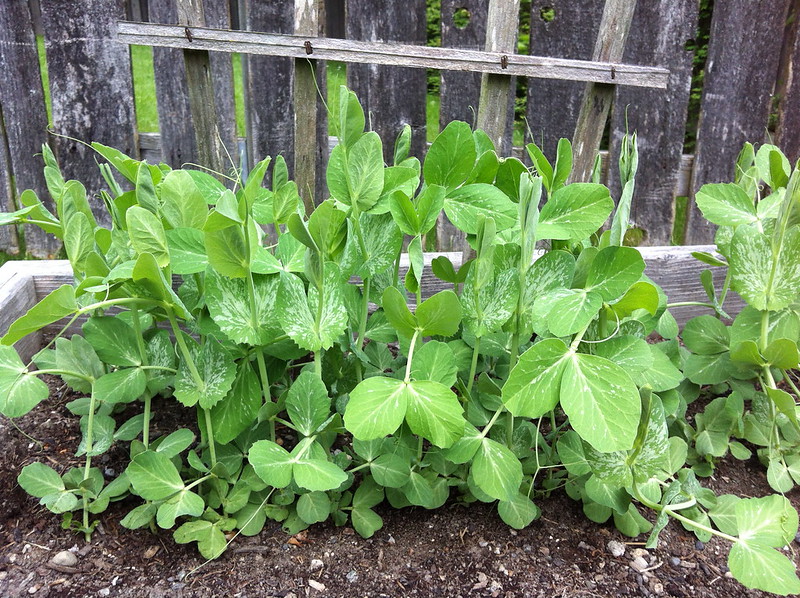 Photo credit: rosie_currier on Flickr
Photo credit: rosie_currier on Flickr
There are three different sweet peas commonly grown in gardens: English peas, snow peas, and sugar snap peas.
- English peas are the most common types and do not have edible pods. They are commonly called “garden peas,” “green peas, or “shelling peas.”
- Snow peas have thin edible pods and are harvested when the seeds are immature and haven’t filled out. They are often called “Chinese pea pods.”
- Sugar snap or “snap” peas combine the two other types. They have an edible pod, and you allow seeds to plump up before harvesting.
Recommended Varieties
- English Peas: Green Arrow, Lincoln, Maestro, Mr. Big
- Snow Peas: Avalanche, Golden Sweet, Mammoth Melting Sugar, Oregon Giant, Oregon Sugar Pod
- Sugar Snap Peas: Cascadia, Sugar Ann, Sugar Daddy, Super Sugar Snap, Tendersweet
Beans
Whether you grow bush or pole varieties, beans grow quickly in the garden and are typically high-yielding. Bush beans stay shorter, so they don’t need extra support. Pole beans develop climbing vines, so they need a trellis or other support.
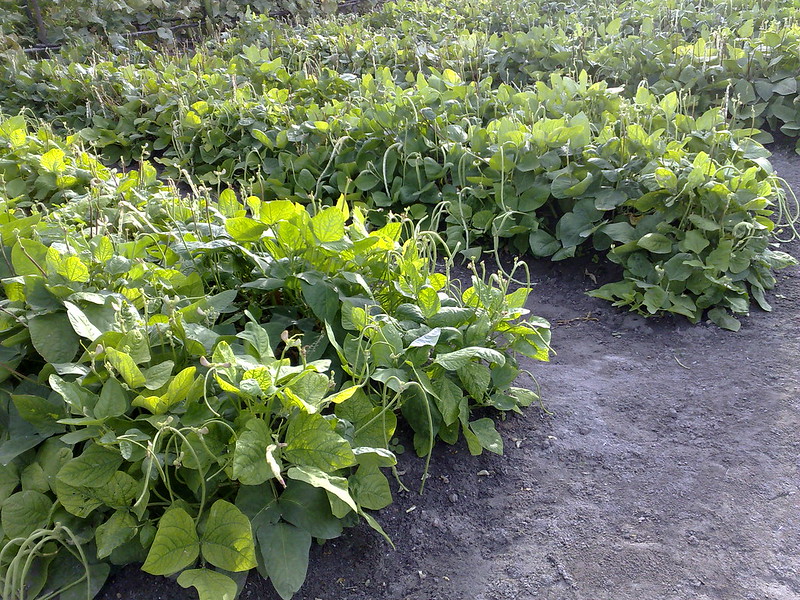
Photo credit: rixv on Flickr
Recommended Varieties
- Bush beans: Contender, Stringless Snaps, Top Crop Bean
- Pole beans: Blue Lake Pole, Heirloom Kentucky Wonder, Kentucky Blue
Sweet Corn
Sweet corn is another garden staple, with more than 85 varieties available for purchase. Growing corn isn’t the most efficient use of space, but if you plant pumpkins or squash with the corn, it’s less of a concern.
All of the different varieties are classified as one of three types: standard (su), sugary enhanced (se), and supersweet (sh2). These different types vary in their kernel sugar level, seed vigor, and how well they store post-harvest.
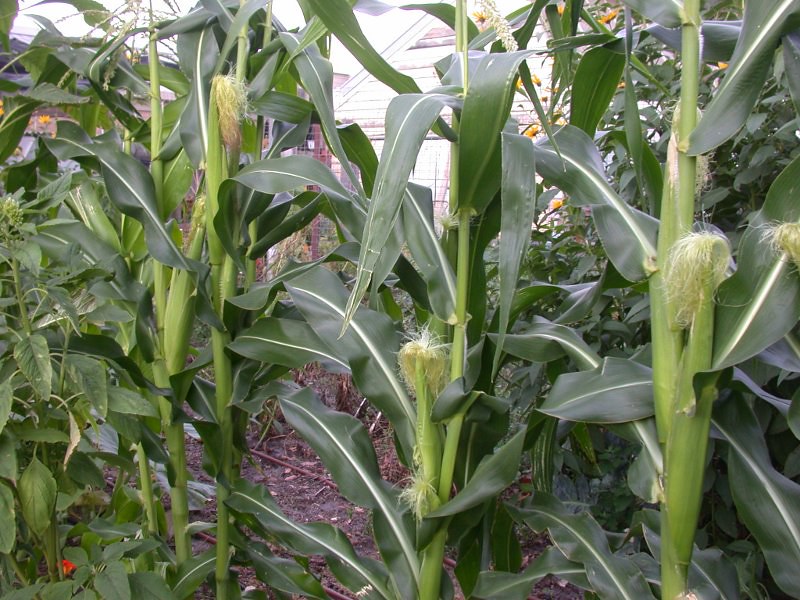
Photo credit: graibeard on Flickr
- Standard sweet corn: Lowest sugar levels, traditional sweet corn flavor, only good for a couple of days once mature.
- Sugary enhanced: medium sugar level, tender kernels, more prolonged harvest and storage than standard.
- Supersweet or shrunken: up to twice as much sugar as standard types, most extended harvest and storage length, lower yield.
Recommended Varieties
- Standard Sweet Corn: Golden Cross Bantam, Jubilee, Silver Queen
- Sugary Enhanced Sweet Corn: Bodacious, Breeder’s Choice, Delectable, Incredible, Peaches & Cream
- Supersweet Sweet Corn: American Dream, Early Xtra Sweet
Other High-Yield Vegetables
Traditionally grown in the South, okra is a fantastic, high-yielding garden vegetable and makes a great addition to Northern gardens too. The veggies are good for soups and stews, and can even be pickled. Plus, the flowers look similar to hibiscus.
Recommended Varieties
- Okra: Cajun Delight, Clemson Spineless
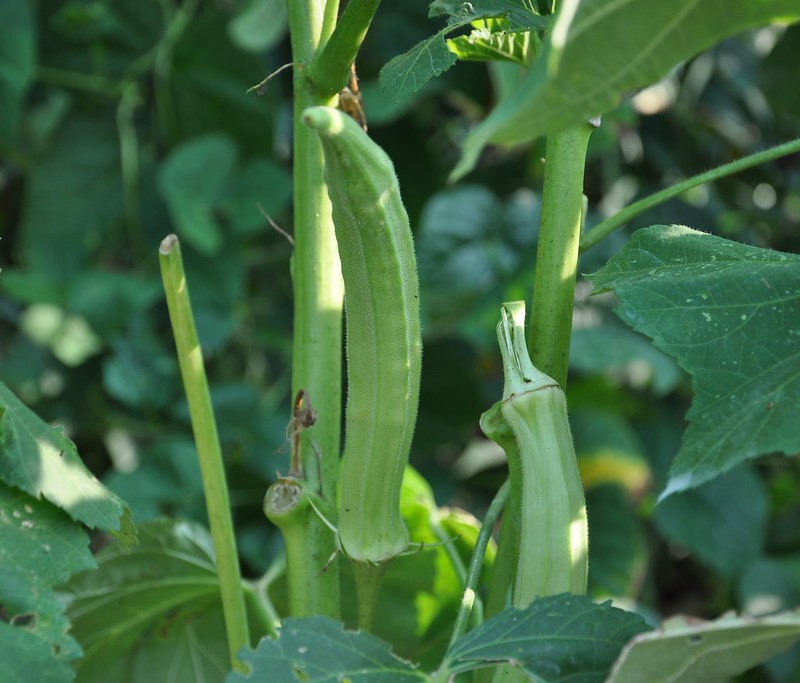
Photo credit: jbr.john316 on Flickr
Reach Out to Your County Extension For Help
If you’re still struggling with what vegetables to plant, turn to the local “extension” office for help. Extension agents can help you troubleshoot issues, assist you in understanding the challenges of growing in your area, and recommend plants that do well in your climate. Their services are usually free to the public.
They are in each state associated with the land-grant college system, with an office typically in each county.
Additional Resources
- Growth charts, like Iowa State University's, show how long it takes plants to reach maturity after sowing.
- If you’re new to vegetable gardening, the Extension Agents from the University of New Hampshire have helpful tips on preparing a vegetable garden site.
- Short on gardening space? Download the free resource from Iowa State University Extension and Outreach on container vegetable gardening.
- Cornell University’s College of Agriculture & Life Sciences has compiled a list of disease-resistant varieties with information taken from seed catalogs.
- To gauge how many plants to put in the ground, use the plant per person table provided by Texas A&M AgriLife Extension.



